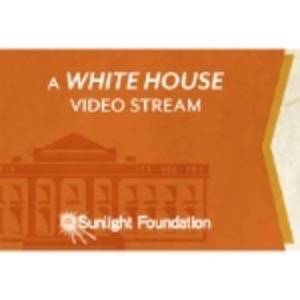Last month, open government technologists at the non-partisan Sunlight Foundation released three new Roku applications that bring audio and video from the White House, Congress and Supreme Court to television. Roku is an Internet TV appliance.

“We know Americans want the kind of immediate access to government that the Internet can provide – they’re connecting with Congress on Facebook, asking President Obama questions over Twitter and can now bring Washington right into their living room using our new Sunlight Roku apps,” said Gabriela Schneider, Sunlight’s communications director. “We hope to prove to all branches of the federal government that they should make their work available in open formats, because Americans are, indeed, interested in knowing and engaging more with their government.”

Word of Mouth
In the weeks since their release, the apps have been downloaded thousands of times without any promotion, suggesting that there is real interest in tracking the events in Washington among the owners of the one million Roku boxes that have been sold to date.
According to the Sunlight Foundation, at last count the White House app is the most popular, with downloads to 6,489 accounts. The Congress app is on 2,800 accounts and the Supreme Court app on 3,016 accounts. The White House app is built around the video and text feeds from WhiteHouse.gov. The congressional app pulls from Sunlight’s own real-time API, which any developer can do if they wish. (The code for all of Sunlight’s APIs can be found at the Sunlight Labs github page.) The Supreme Court app is limited to audio, due to the prohibition on video recording in the highest court in the land, which it pulls from the Oyez Project.
The release of these apps follows the considerable success of the Sunlight Foundation in releasing apps that help make government more transparent. The Real-Time CongressiPhone app has now been downloaded 24,469 times, according to Sunlight.
The open sourceAndroid version of the Congress app, however, has proven to be much more popular, with over 400,000 downloads to date since its release and between 60,000 and 80,000 uses a week, based on the API calls its users have been making.

Open government? There’s an app – and an API – for that
The use of these apps, as a whole, highlights both an evolution of open government advocacy and an important trend for non-profits in general to internalize: in 2011, making more open data available using APIs, embeddable media and applications for mobile platforms or appliances enables an organization to reach far beyond a single website. White House and General Service Agency (GSA) officials in charge of the federal .gov review process appear to have internalized the same message, which will be important as the GSA moves forward with its Mobile Gov initiative.
While Washington tends to lag behind the private sector when it comes to technology, some pockets of innovation have emerged. As Steven VanRoekel, the new federal chief information officer, begins his first full week on the job Monday, it’s worth noting that during his time at the FCC, he said, “everything should be an API.”
If VanRoekel can include moving forward on that vision for open data in the context of his priorities, which include cybersecurity, moving to cloud computing and mobile government, citizens will see more apps that spur better decisions and new businesses.
The Sunlight Foundation’s own Sunlight Health app already demonstrates one possible direction. Imagine if liberated financial data were to be baked into more apps in the future.


















